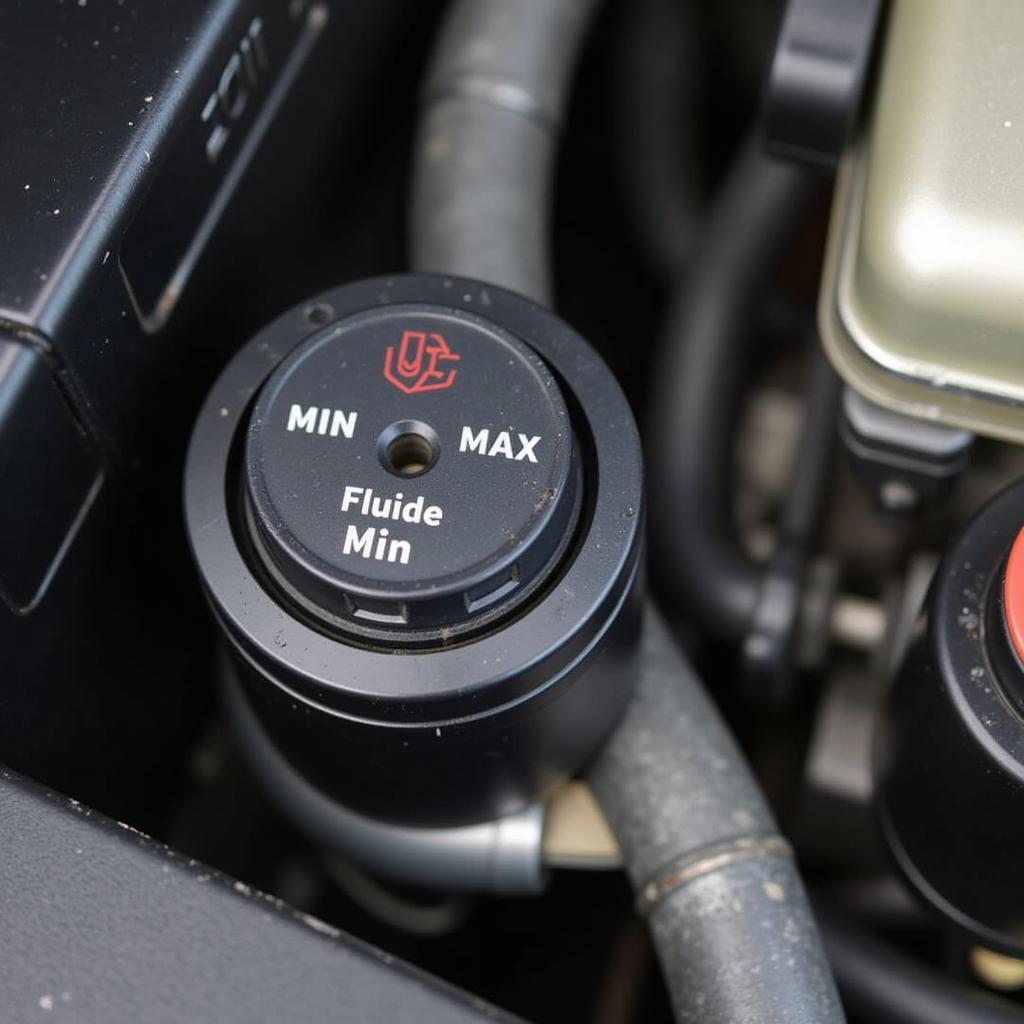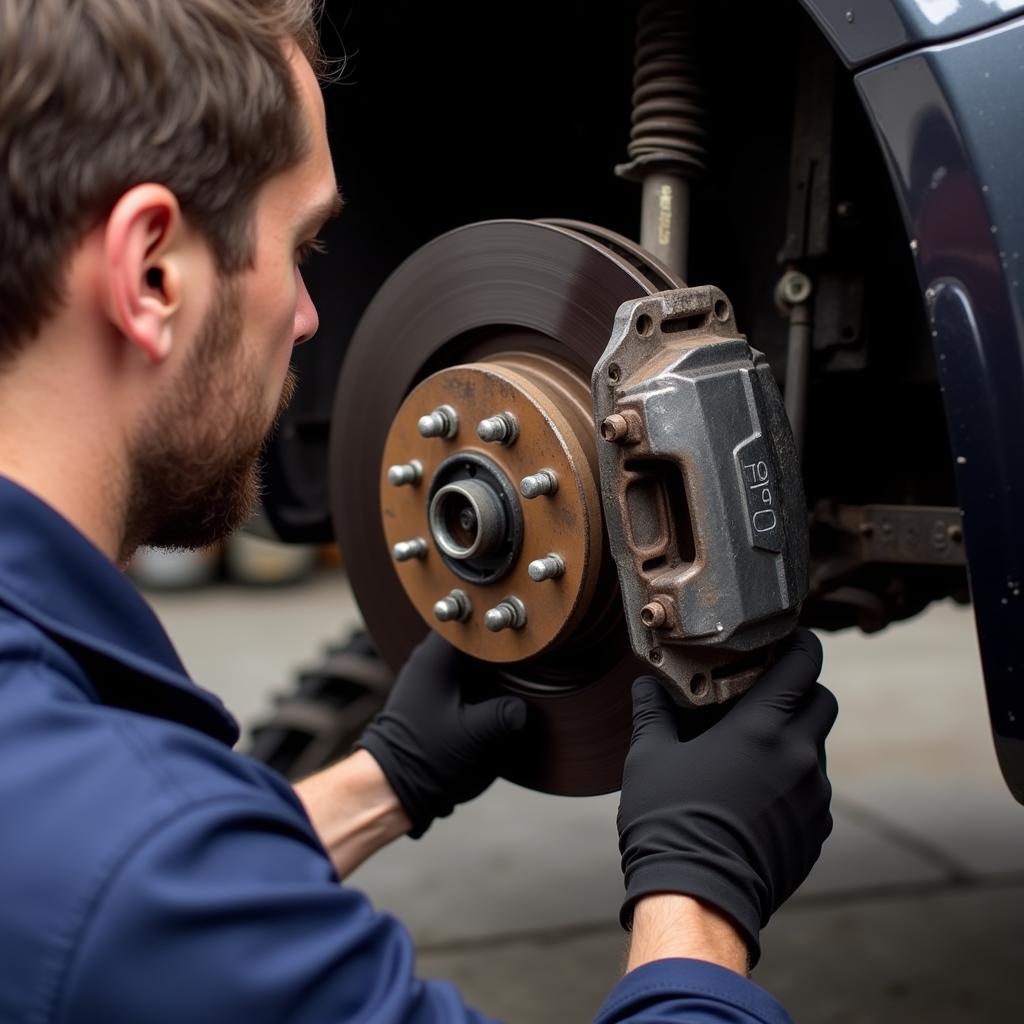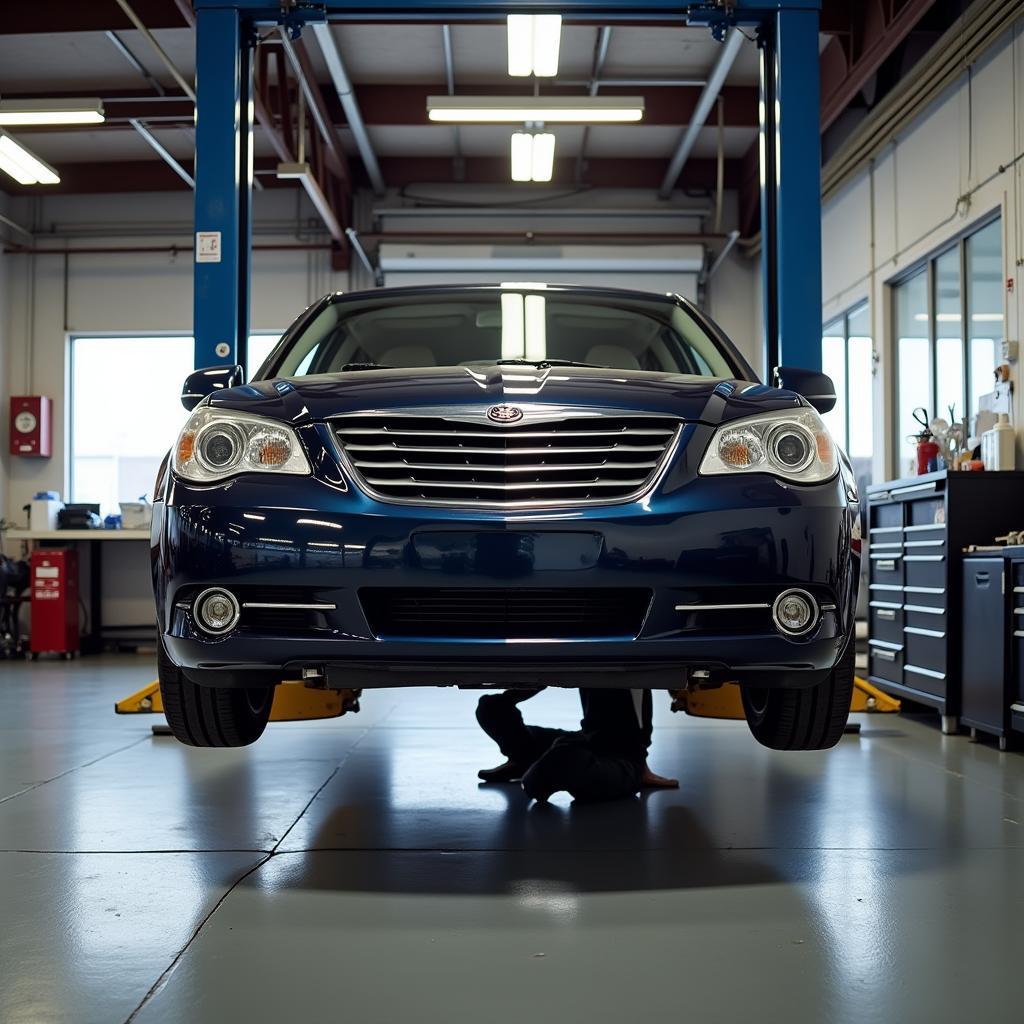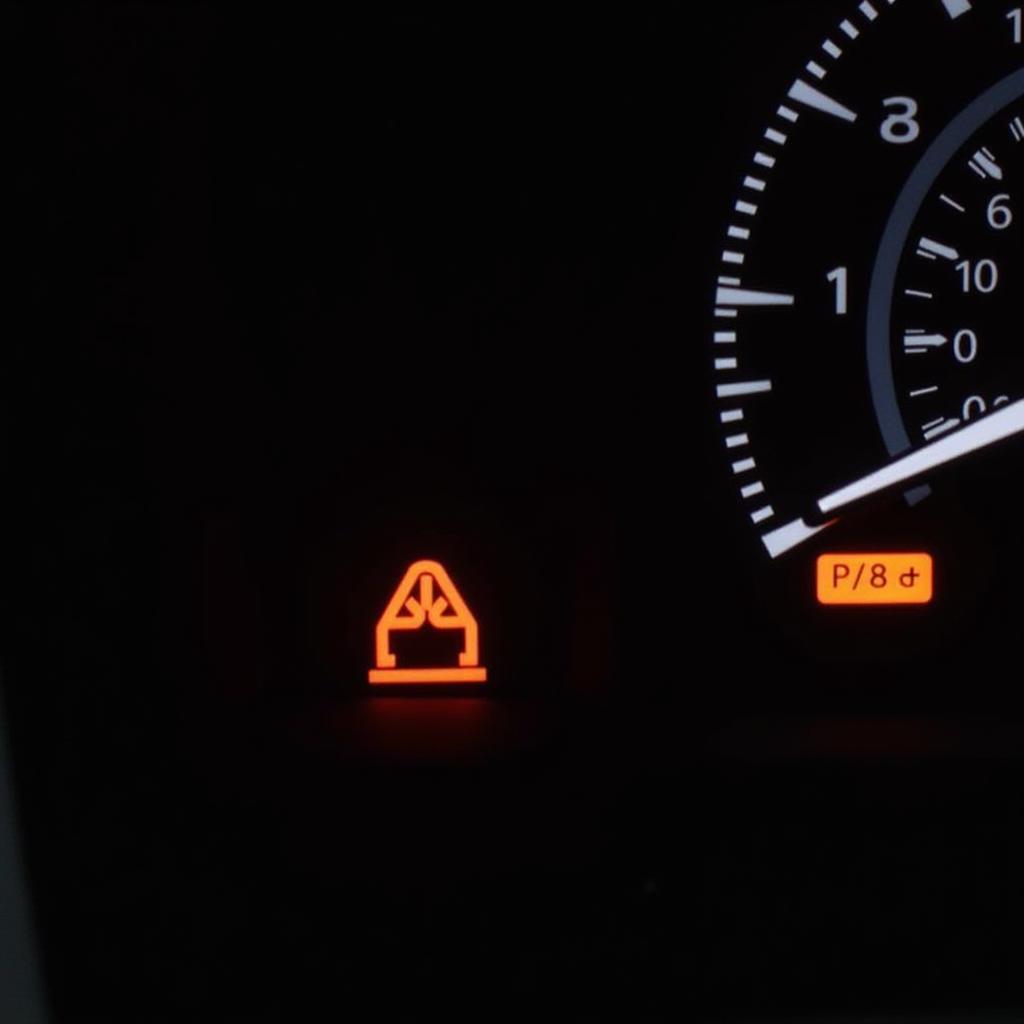The brake warning light on your dashboard is a crucial safety feature, and when it illuminates while driving your 2010 Chrysler Sebring, it’s a clear sign that something needs attention. Ignoring this warning could compromise your ability to brake effectively, leading to potentially dangerous situations. This comprehensive guide will delve into the common causes behind a 2010 Chrysler Sebring brake warning light illuminating while driving and provide potential solutions to get you back on the road safely.
Understanding Your Chrysler Sebring’s Brake System
Before diving into the causes, it’s helpful to understand the basic components of your Sebring’s braking system. This system is primarily hydraulic, meaning it uses brake fluid pressure to activate the brakes. Key components include:
- Brake Pedal: Pressing this pedal generates hydraulic pressure.
- Master Cylinder: This component converts pedal pressure into hydraulic pressure.
- Brake Lines: These lines carry pressurized brake fluid to each wheel.
- Brake Calipers (Disc Brakes): These components house pistons that squeeze brake pads against the rotors, creating friction to slow the wheels.
- Brake Drums (Drum Brakes): Found on some older or rear-wheel drive vehicles, drums use shoes that press against a drum to slow the vehicle.
- Brake Fluid: A special hydraulic fluid designed to withstand the heat and pressure of braking.
- ABS (Anti-lock Braking System): This system prevents wheel lockup during hard braking.
Common Causes of a Brake Warning Light
There are several reasons why your 2010 Chrysler Sebring’s brake warning light might be on while driving. Let’s explore some of the most common culprits:
1. Low Brake Fluid Level
Why it matters: Your brake system relies on adequate brake fluid to function correctly. A low fluid level often indicates a leak somewhere in the system.
How to check:
- Locate the brake fluid reservoir under the hood.
- Check the fluid level against the “Min” and “Max” markings on the reservoir.
Solution: If the fluid level is low, add the correct type of brake fluid for your Chrysler Sebring. Important: Never drive a car with low brake fluid. Have your car towed to a trusted mechanic to diagnose and repair the leak.
 Chrysler Sebring Brake Fluid Reservoir
Chrysler Sebring Brake Fluid Reservoir
2. Worn Brake Pads
Why it matters: Brake pads wear down over time due to friction. Excessively worn pads reduce braking effectiveness and can damage the rotors.
How to tell: While visual inspection is the most accurate method, worn brake pads often cause a squealing or grinding noise when braking.
Solution: If your brake pads are worn, they need to be replaced. This is a standard maintenance procedure.
3. Faulty Brake Caliper
Why it matters: Brake calipers are essential for applying pressure to the brake pads. A stuck or seized caliper can cause uneven braking, pulling, and premature pad wear.
How to tell: Symptoms include pulling to one side while braking, a burning smell, or a dragging sensation.
Solution: A faulty brake caliper requires immediate attention from a qualified mechanic. Repair or replacement is typically necessary.
 Inspecting a Chrysler Sebring Brake Caliper
Inspecting a Chrysler Sebring Brake Caliper
4. ABS Issues
Why it matters: Your ABS system is crucial for maintaining control during hard braking situations.
How to tell: In addition to the brake warning light, the ABS light might also be illuminated. You might also feel unusual pulsations in the brake pedal during braking.
Solution: Diagnosing ABS problems requires specialized equipment. It’s best to have this addressed by a professional mechanic.
5. Brake Light Switch Malfunction
Why it matters: The brake light switch activates your brake lights when you press the pedal. A malfunctioning switch can lead to brake lights that don’t work or stay on constantly.
How to tell: If your brake lights are not working as they should, this could be a sign of a faulty switch.
Solution: Replacing the brake light switch is a relatively simple repair for a qualified mechanic.
6. Electrical Issues
Why it matters: The brake warning light system relies on electrical sensors and wiring.
How to tell: Electrical issues can be tricky to diagnose without experience.
Solution: If you suspect an electrical problem, it’s best to have your Chrysler Sebring checked by a mechanic with electrical diagnostic expertise.
Important Considerations
- Safety First: Never ignore a brake warning light. Your safety and the safety of others on the road depend on a properly functioning braking system.
- Don’t Delay: Addressing brake issues promptly can prevent more serious and costly repairs down the line.
- Professional Diagnosis: While this guide provides general information, a proper diagnosis from a qualified mechanic is essential for accurately identifying and repairing any brake system issues with your 2010 Chrysler Sebring.
 Chrysler Sebring Undergoing Inspection on a Lift
Chrysler Sebring Undergoing Inspection on a Lift
Conclusion
Experiencing a brake warning light on your 2010 Chrysler Sebring while driving is a serious issue that demands immediate attention. By understanding the potential causes outlined in this guide and seeking professional help, you can ensure the safety and reliability of your vehicle’s braking system. Remember, timely maintenance and prompt repairs are key to safe and enjoyable driving.

